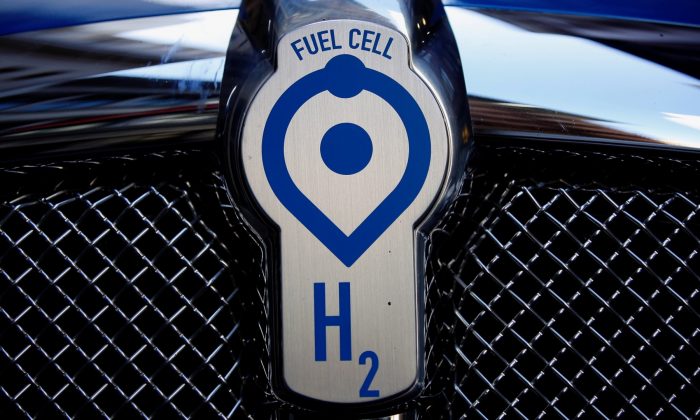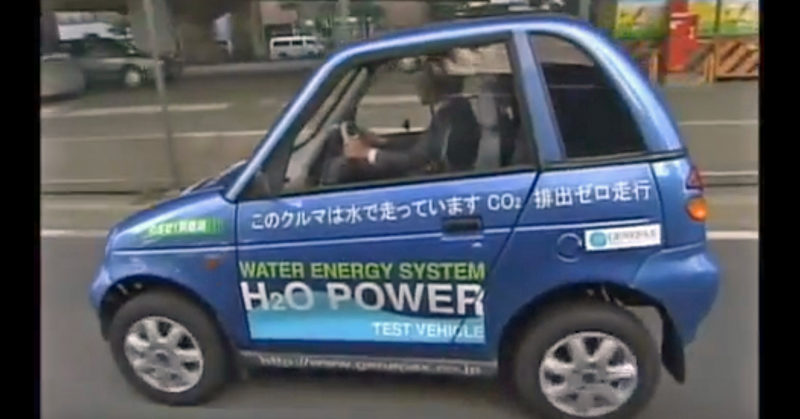
Posted on 04/14/2023 9:52:05 AM PDT by Perseverando

A Toyota Project Portal hydrogen fuel cell electric semi-truck is shown during an event in San Francisco, Calif., on Sept. 13, 2018. (Stephen Lam/Reuters)
Researchers have come up with a new system that turns seawater into hydrogen fuel—a development that could aid in the proliferation of hydrogen fuel cell vehicles.
The new method extracts hydrogen from the ocean by funneling seawater through a double membrane system, using electricity. The design was successful in generating hydrogen gas without the accompaniment of large quantities of harmful byproducts.
Vehicles with hydrogen fuel cells are fed with compressed hydrogen gas. The fuel cells do not burn this gas. Instead, cells transform the chemical energy of the fuel into electrical energy, which then powers the vehicle’s electric motors. The only byproduct is pure water, with zero tailpipe emissions.
“Many water-to-hydrogen systems today try to use a monolayer or single-layer membrane. Our study brought two layers together,” said Adam Nielander, an associate staff scientist with the SUNCAT Center for Interface Science and Catalysis, a SLAC-Stanford joint institute, according to an April 11 news release.
“These membrane architectures allowed us to control the way ions in seawater moved in our experiment,” he added. Results of the study were published in the Joule journal on April 11.
The Double Membrane System Researchers tested out their double membrane system using electrolysis—a method that uses electricity to drive ions to run a desired reaction. The most harmful element to the seawater system is chloride, says Joseph Perryman, a SLAC and Stanford postdoctoral researcher.
“There are many reactive species in seawater that can interfere with the water-to-hydrogen reaction, and the sodium chloride that makes seawater salty is one of the main culprits,” he said.
“In particular, chloride that gets to the anode and oxidizes will reduce the
(Excerpt) Read more at theepochtimes.com ...
What was old is new again.

How much electricity is required?
Cost / lifespan of these membranes?
Where is all the salt going?
Articles like this rarely mention the practicality of upscaling from the lab to common real world use.
Yes.
Saw this article a while back, and it looked like a possibility for storage and transport.
https://www.thebuzzevnews.com/hydrogen-powder-safer-cheaper/
Still think the technology is a ways off, but more promising than EV’s.
I’ve been reading where hydrogen is stored in a solid medium, such as the Lavo home hydrogen battery (Australian company). So far the round-trip efficiency is horrible (50% loss of power between generating, storing, and retrieving to power a fuel cell) and slow 5kW of power. Until they improve those specs then count me as uninterested in hydrogen powered cars.
Hydrogen is much better than EV’s. After 30 thousand miles, batteries on an EV must be changed at a price of $30 thousand.
Try to sell a used 25 thousand mile Tesla. No one in their right mind wants one. It will never economically pay out,,,,right now you can drive a Camry 250 thousand or more miles without putting a wrench on it other than normal, proper maintenance.
Hydrogen is much better than EV’s. After 30 thousand miles, batteries on an EV must be changed at a price of $30 thousand.
Try to sell a used 25 thousand mile Tesla. No one in their right mind wants one. It will never economically pay out,,,,right now you can drive a Camry 250 thousand or more miles without putting a wrench on it other than normal, proper maintenance.
And at that it will take up a lot of space to get to the same energy storage as a 20 gallon tank of gasoline. But you could put it inside your liquid oxygen tank to help keep it cold and cut down on the pressure somewhat.
The process of making hydrogen from water has been known for centuries. I did it in my basement a half century ago. The problem is that, as usual, it takes more energy to make the hydrogen than you get from using it. Sea water is even worse, since the salt creates additional pollutants. This method simply reduces these. It still takes more energy than you get out of using the hydrogen.
Sorry, I came in through the wrong hatch.
And, how much more costly will the end product be than gasoline or even battery power?
“The fly in the ointment is how do you store the stuff?
And that’s where it goes off the rails, every single time.
Why store it at all has always been my question. Generate and use it on demand. Problem solved.
The big three:
1) you can’t get something for nothing.
2) you can’t break even.
3) you can’t get out of the game.
This process is called electrolysis, and it’s been known to the mankind for about several thousand years

#1 = first law of thermodynamics, #2 and #2 = second law of thermodynamics
Absolutely true and true for batteries as well. battery cars burn more fossil fuel and make more CO2 than the newer fuel efficient ICE cars. Even someone as dumb and senile as hair sniffing Joe knows this, so obviously the reason for shoving EVs down our throats is something else like limiting the mobility of the peasants.
“put it inside your liquid oxygen tank to help keep it cold”
BRILLIANT!! That would be just like the Musk BFRs.
Still, the energy needed to make the hydrogen is more than the energy that will be released when the hydrogen is burned.
Almost everyone knows electricity comes from that little face plate on your walls.
Disclaimer: Opinions posted on Free Republic are those of the individual posters and do not necessarily represent the opinion of Free Republic or its management. All materials posted herein are protected by copyright law and the exemption for fair use of copyrighted works.